Note: Artesque was originally completed as a barebones, functional prototype around 2015. Screenshots of the prototype are currently on this page. In late 2024, an update was made with small polish changes and small amounts of additional content. This was made and updated in Construct 2.
Summary
I wanted to make a prototype of a game or interactive experience that encouraged people to look at art in different ways. I wanted them to be able to approach art in a simple and straightforward way, that was also fun and insightful. Do the obvious, overtly.
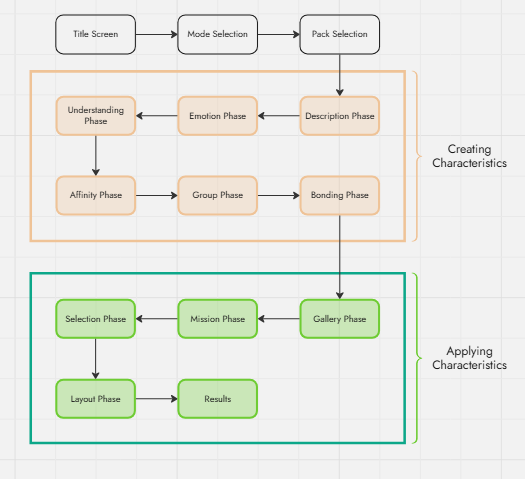
To execute this, I created a series of different simple tasks known as phases. I designed each phase mostly independently of each other, so that 1) each phase could have a clear and cohesive design, 2) any development hurdles would be localized to each phase, 3) any opportunity to expand the game further could be localized to each phase as much as possible.
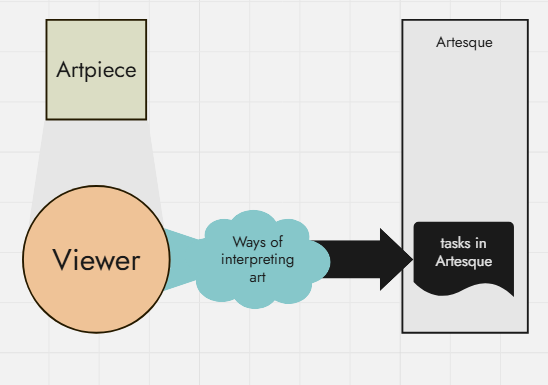
I modeled the tasks around the various ways artworks are evaluated; in the game, players act out these tasks and thus experience these evaluations more explicitly and with deliberate intention. I used Leder et. al’s revised model of aesthetic appreciation as one way to support some of the design, which discusses a systematic way of the different ways in which art viewers appreciate art. This model was used in other areas of my doctoral studies.

UX and visual design were only minor considerations in this project; product experience would improve with further development in these areas.
Phases
The following is an explanation of each phase.
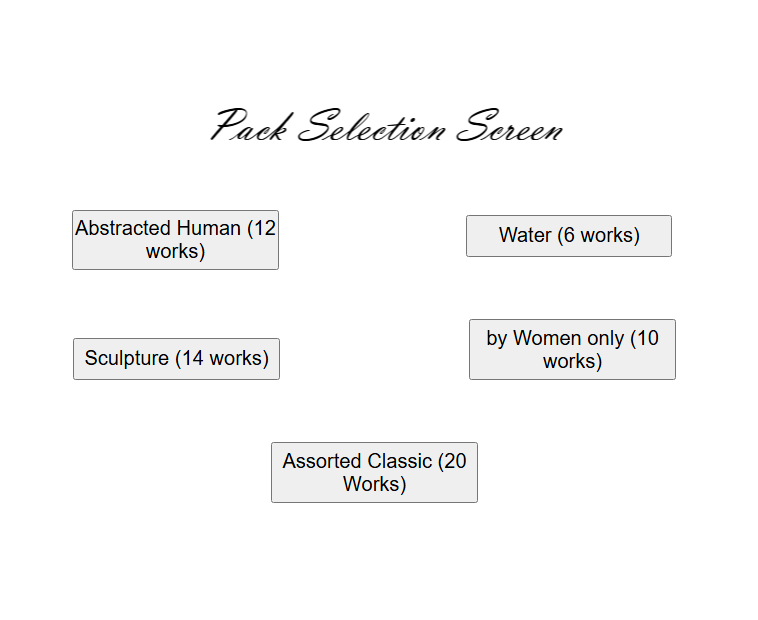
Pack Selection Phase
Players can choose from a selection of “Packs” which denote a specific set of works they are evaluating.

Description Phase
Players will consider their initial reactions to a work and encapsulate that in a single word. The intention is for the player to trust any initial thoughts they may have about a work without necessarily thinking about it too hard.
The system detects if a word was previously written to ensure a player isn’t just spamming the same word without thinking.
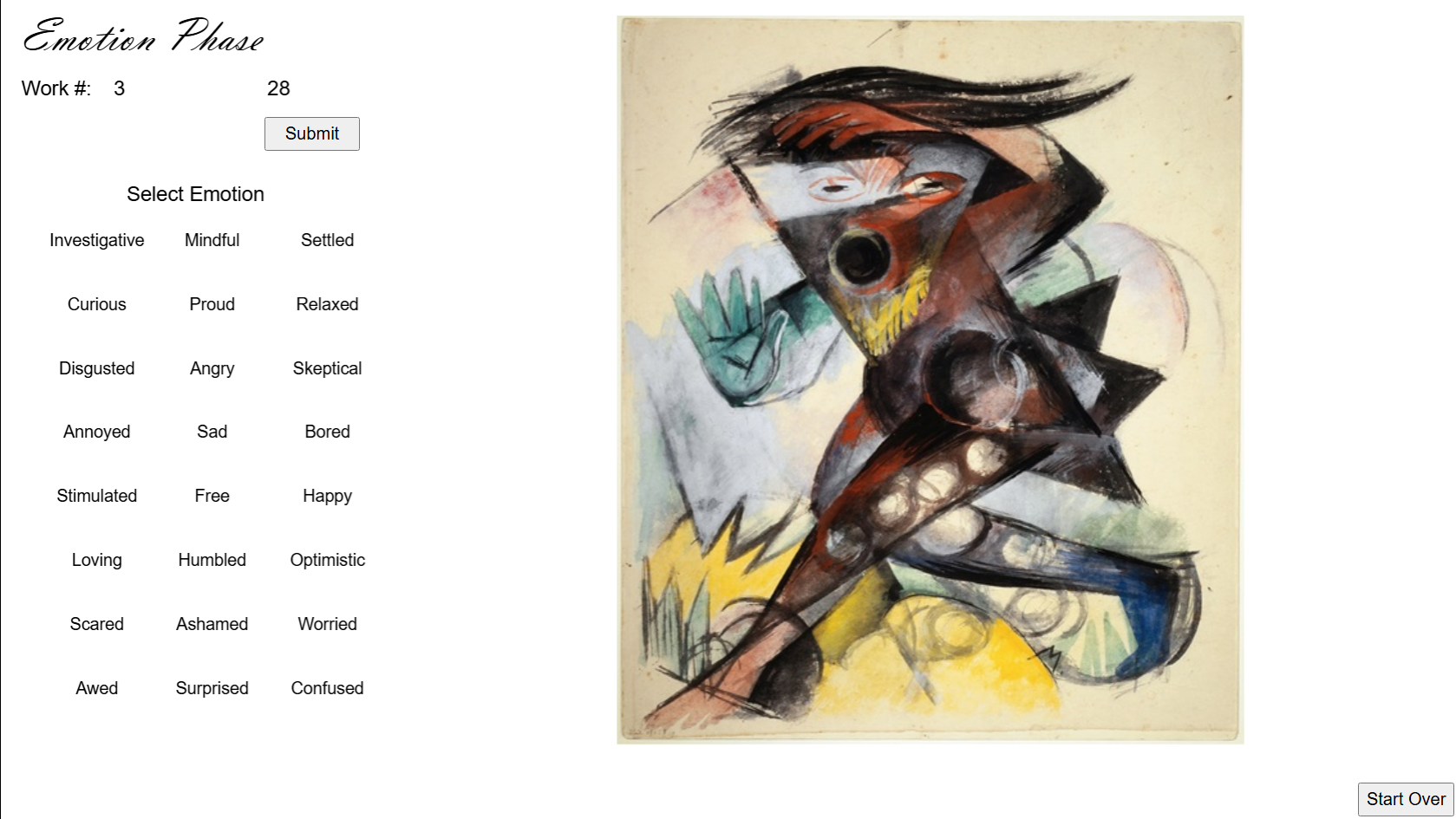
Emotion Phase
Players will familiarize with different emotions and tie those emotions to art work. The intention is for the player to more closely associate art viewing with emotion and to consider emotions they might have not thought of when thinking about art work.
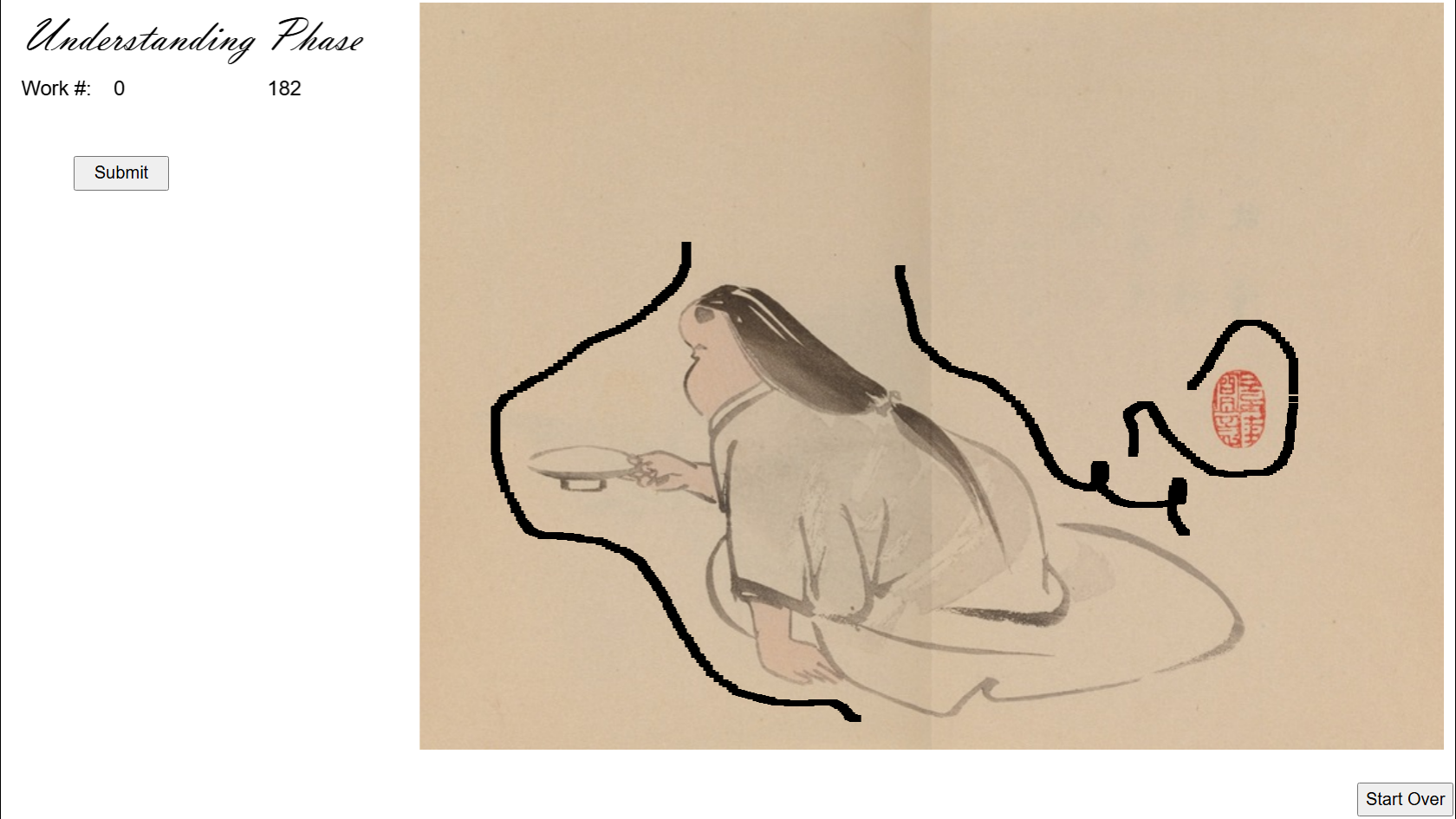
Understanding Phase
Players will draw on the artwork using a simple tool. The intention is for the player to connect more closely with visual elements of the work, bearing in mind that viewers can’t typically draw on an artwork when viewing it in a non-digital setting.

Affinity Phase
With a very short time limit, the player must choose either an up or down arrow on each work. The phase serves as a reminder that it’s fine to simply like or dislike a work, and that this does play into how audiences perceive a work.

Group Phase
The player puts each group into a pile and then ascribes a word or phrase to that pile. The intention is for players to categorize works based on shared characteristics, which draws relationships among artworks.

Bonding Phase
Similar to the group phase, the player pairs each work with exactly one other work so that by the end, each artwork has a pair. The intention in this phase is to help the player further think about similarities and dissimilarities across artworks in a way that is not as convenient as the freeform piling in the group phase. Because of the pairing system, an even amount of art pieces is in each pack.

Gallery Phase
The players are presented with the scenario of managing a gallery. A scenario gives the play experience a bit more gravity as players have richer cues to connect the art pieces to their imagination, providing additional depth and reason to evaluating artwork. Currently, there is only one gallery available, but further updates could expand the number.
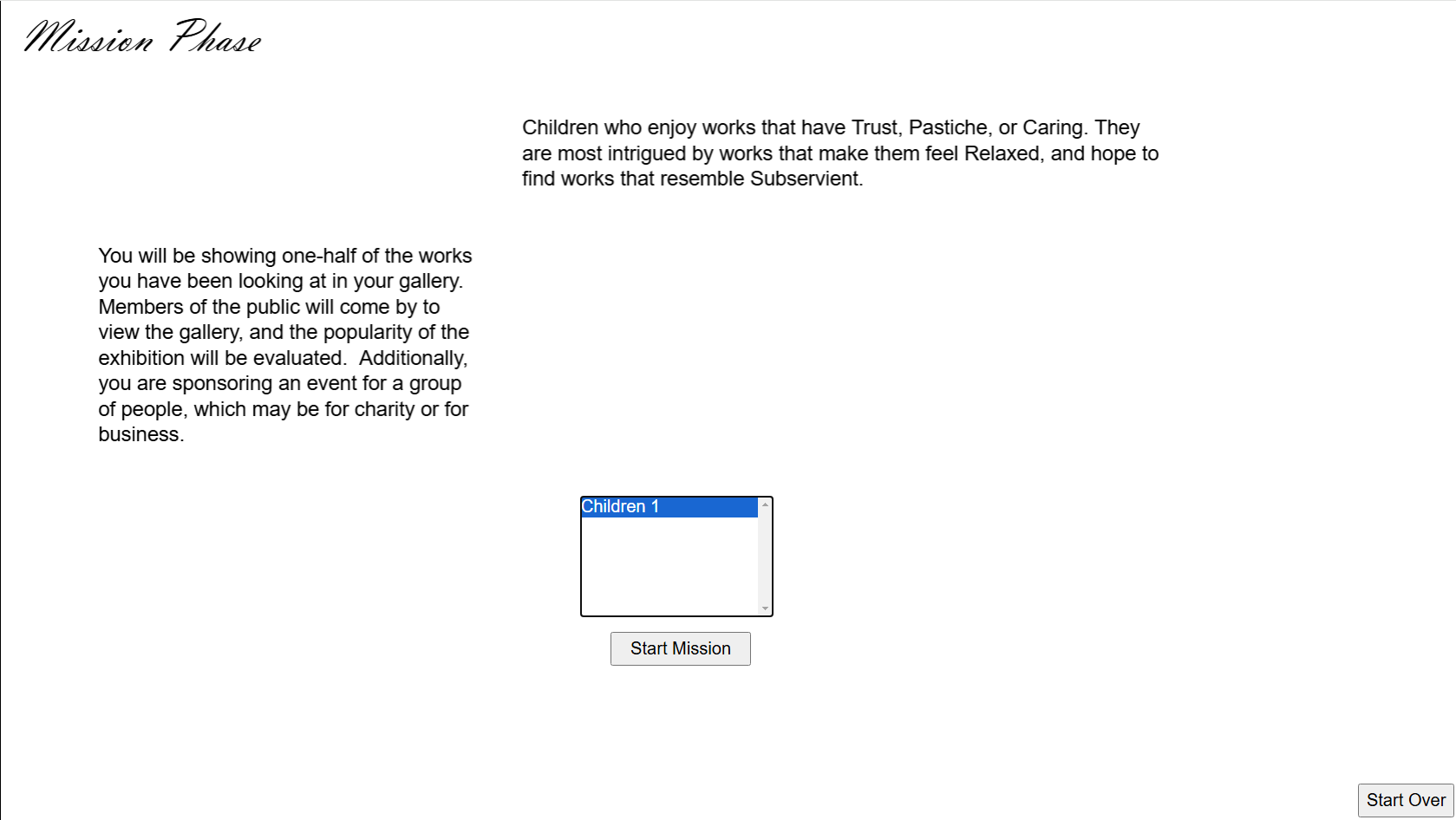
Mission Phase & Selection Phase
Based on what the player input in past phases, players are presented with a randomized selection of qualities. For example, if a player used a certain category label in the Group Phase, it might appear in the mission phase. In another example, the program deciphered whether the users’ drawing was large or small in the Understanding Phase.

The player then has to decide which artworks they would like to present, 50% of the total number in the pack. Both the mission values and artwork selections are later used in scoring. Further work could expand on what the program detects, just as further work could expand on the number of missions available.
The intention is for the player to experience further contextualization. In the selection process, the player needs to prioritize, and sometimes what is best is not for the gallery and mission is not what the player prefers. With the current design, there is also a bit of a memory mechanic wherein it’s beneficial for the player to remember what they input in past phases. Like other creative and organizational endeavors, decisions are made on available data and intuition. This is no different in this simulation.

Layout Phase & Final Results
The player then needs to place the work into different locations in the gallery. Once the player submits all placed works, a final results screen appears. This screen provides simple scoring which adds gamified elements to the experience.
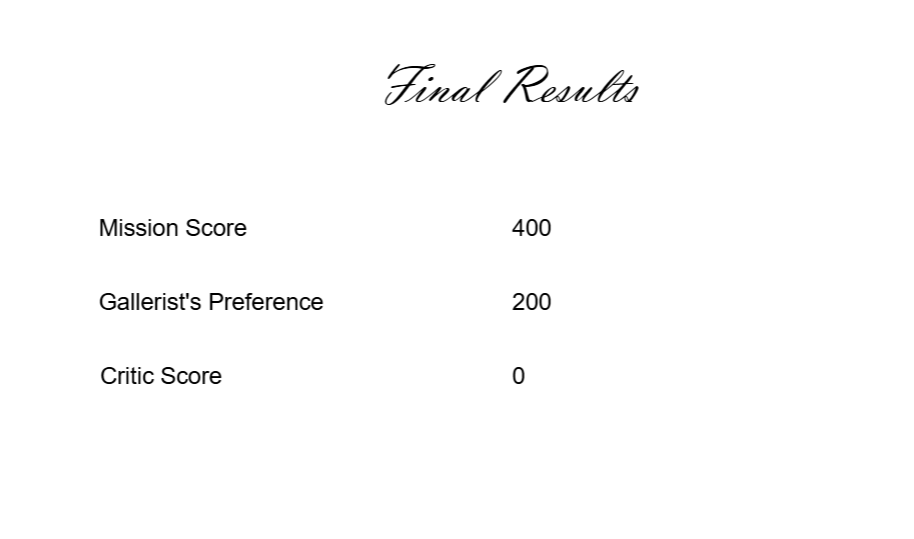
The program calculates artwork choices based on elements revealed in the mission, their positional relationship in the gallery, and other user input during the experience. The program also provides different scores, showing that there are divergent evaluation criteria among goals and audiences.
Further development could shift some of the activity design and scoring evaluation to more closely replicate a gallery such as the player doing market research; or by using a different scenario that more closely reflects the user’s reactions (e.g. putting up paintings in a home).
Reflections: Selecting Images for Packs
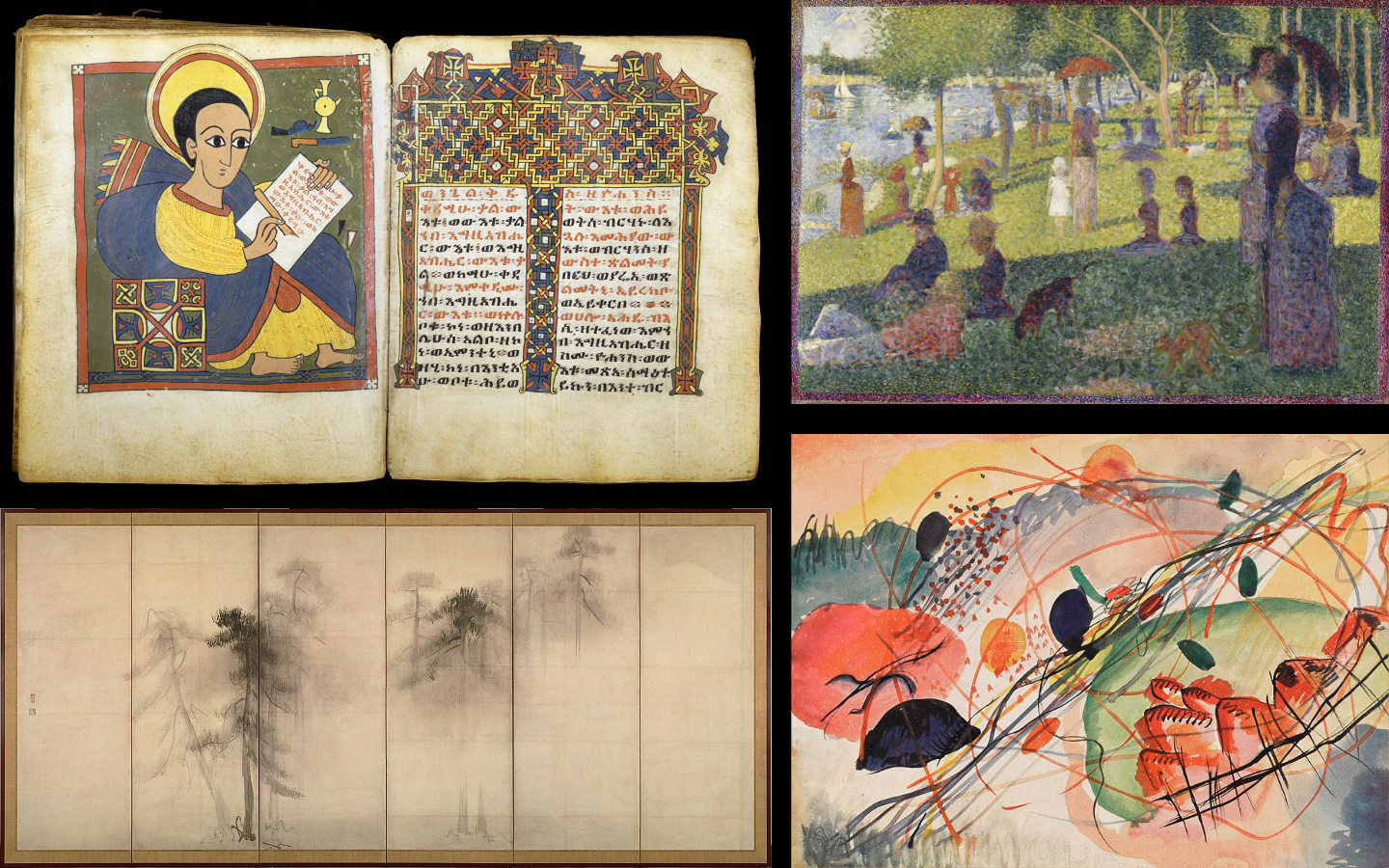
When updating the project in late 2024, I evaluated the two original packs of images in Artesque. When I originally made the older packs, I intentionally integrated variety in artists’ identity, culture, style, and subject matter. Nevertheless, the nuance of my understanding of identity and culture heightened in the years that passed. Thus, I switched out a few works in the existing packs and made some entirely new packs to more fully offer breadth in works a player might see.

The act of creating new packs was a brief but interesting journey in exploring the limitation of public domain images. It was a challenge to develop different pack themes while balancing the many, often conflicting modern lenses towards identity, cultural representation, and cultural respect.
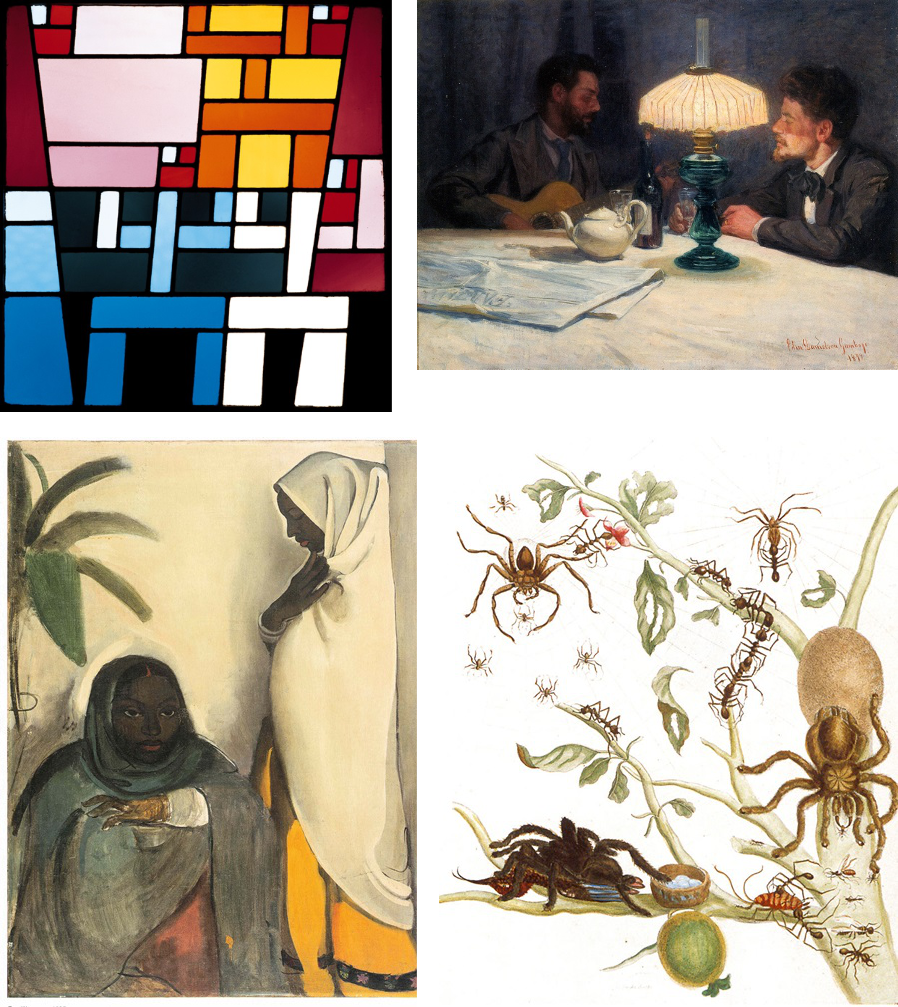
The current availability of public domain images reflects the constellation of historical art lineages and also the history of art; people - whether through deliberate efforts or simply acting out social structures - have hoisted the prevalence of male artists and Western individual artists, at least as far as who is named, proliferated as art, and now accessible via the Internet. The recent historical shift towards more intentionally adding variety to perspectives in the representation of individual artists through identity and cultural markers is not reflected in the availability of public domain images because the amount of years that need to pass in order for a work to become publicly available is much older than this shift.

In my opinion, it is imperative to have variety rather than just the usual when trying to more fully capture the human experience. Thus, similar to approaches with other projects, I took care to have each pack have less usual perspectives, at least on a surface level. Of course, there is much more to perspective variety than heritage and identity, but they do serve as relatively easy barometers to gauge differences in perspectives through assumed habits of practice, teachings, etc. through culture. Since heritage and identity influence culture and how people look at the world, this is interestingly still important but possibly less divergent today (in comparison to any time period with work that is now in the public domain) because of global connectedness and growing similarities and sharedness in how people live their lives.
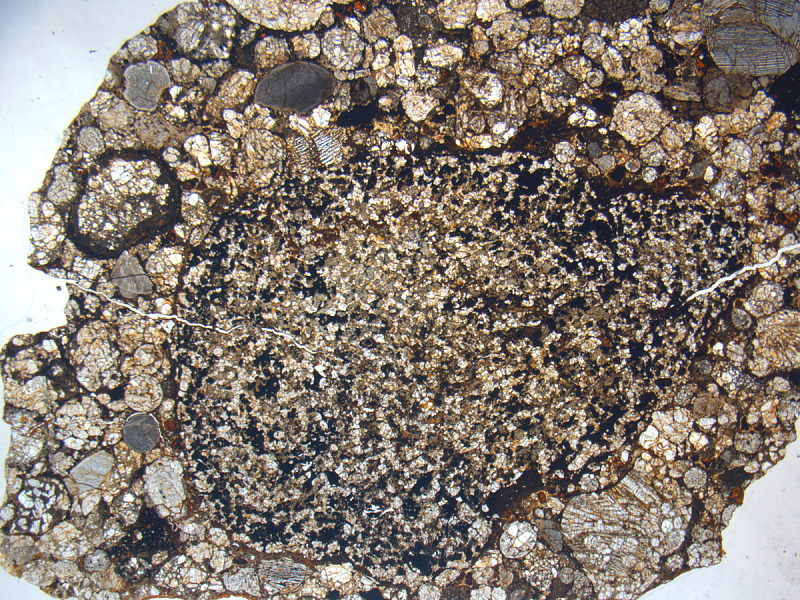
Potential new opportunities for packs could include other types of media and scientific media.
Concluding Reflections
Artesque provides a simple gamified experience that attempts to shift players’ perspectives on viewing art. I will use future projects to further develop social system simulations; Artesque provides an idea of the kind of design and thinking I can provide around serious games, gamification, and simulation.
Try Artesque through my github pages.
